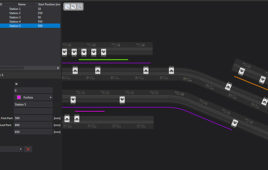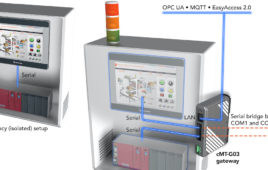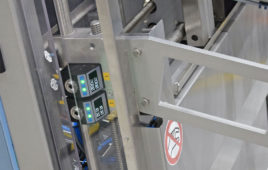The choice between a cable assembly or mating connector often depends on the sensor type, physical installation location, variety of sensors and expertise of the installer. While mating connectors are available in standard configurations, custom options are available to withstand extreme environments or high pressure. At the same time, cables can be provided in Teflon, neoprene and other materials to address specific operating conditions.
With the variety of options available, the following recommendations can serve as guidelines for best electrical connections for pressure transducers for operation in different environments.
Hazardous Areas
For explosion-proof environments, a pressure transducer is typically wired into a junction box and cable is run through the conduit according to the electrical code. With certain instruments, the junction box is integral to the transducer, so terminations are made within the housing. However, cable length can be limited and electrical terminations coming directly from the transducer are limited to cable options.
Intrinsically-Safe Locations
Intrinsically safe and non-incendive locations do have available connector options. An intrinsically safe transmitter will require a Zener barrier, whereas non-incendive approvals require a conduit over the electrical connection, which can be made to a connector. Always consult local regulations regarding safety in selection of the correct connection type.
Submersible and Sub-sea
Submersible pressure transducers typically are installed with cable connections to allow the diaphragm to correct for barometric pressure changes at the surface (or outside of the tank). Cable is the ideal option to ensure that this occurs. Cable can be specified with materials compatible with various liquids and gases for long-term use. Submersible installations, such as diesel tank level, can be considered hazardous and can also require an intrinsically safe installation.
For sub-sea applications, connectors can be a better option. The pressure associated with submersion cannot typically be held with cable connections to prevent water ingress and, thus, an electrical short.
High Pressure
For high pressure applications, sealed gauge reference is a safe option. In addition to protecting electronics from moisture penetration, it prevents the transducer from correcting for barometric pressure. In higher pressure applications, barometric pressure is a smaller percentage of the overall range, so it is less likely to effect the overall reading.
Who is Installing the Pressure Sensors?
The location of the install and the personnel assigned to do the installation can make a difference in the selection of the electrical connection. For example, if a field technician with no formal training in pressure transducers is assigned the installation, a connector is probably a safer option as it can reduce the risk of wiring mistakes and make a faster connection by plugging A into B.
Long lengths of cable on the transducer in the wrong hands can be problematic if the cable jacket is cut by accident as this can lead to either sending the sensor back for repair, replacement or splicing the two ends together. The replacement of a cable assembly can be much more cost effective and easier to stock.
Let’s say, for example, a commercial water pump manufacturer is upgrading a water pump system in an apartment building and the work is being contracted to a licensed installer. The building control panel is located a long distance from the actual pump where the pump and instrumentation site. To minimize down time and quickly run the cable from the control room to the instrumentation, connectors are the safest choice.
A connector would be a preferable choice should the system require future repair by the owner or user of equipment. Pressure transducer manufacturers, for the most part, offer the same or similar connection options and pin-out configurations. If building maintenance personnel will be responsible for repair, working with simple instructions on how to disconnect the connector, shut the valve, unthread the sensor and replace it are much safer and easier than including wiring and splicing instructions.
On the other hand, having cable integral to the transducer can be a nice option for trained personnel. They can use the same transducer at multiple locations on site and cut the cable back for optimal lengths. It can deter untrained people from making modifications to a system they are not authorized or qualified to do.
How Many Variations of Sensors Do I Have?
For certain industrial and OEM applications, a single piece of equipment can use various sensors. Using connectors can save time by centralizing wiring to a cable harness. In some cases, a cable with an in-line connector is also an option. It keeps the harness neat in a central location and allows the pressure transducer to reach around other items and parts.
Using different electrical connections for different parts is an added safety feature. To ensure a 100 PSI transducer is installed in one area and the 10,000 PSI transducer is put at another section, different connectors (and different process connections) can prevent issues and protect employees and system users.
Filed Under: Sensors (pressure), M2M (machine to machine)




